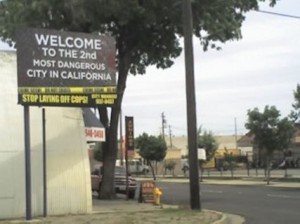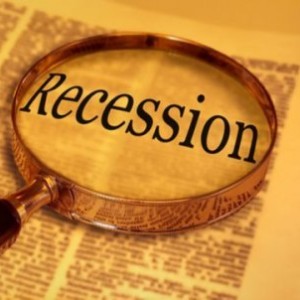 A little over a week ago, U.S. Treasury Secretary Timothy Geithner penned an article for the New York Times entitled “Welcome To The Recovery” in which he touted the great strides that the U.S. economy was making. But with unemployment still dangerously high and with foreclosures and personal bankruptcies continuing to set all-time records, should we really be talking about a “recovery”? The truth is that the numbers don’t lie, and statistic after statistic shows that the economic fundamentals continue to get progressively worse. The U.S. government can continue to try to pump up with economy with more debt, but the reality is that there is not going to be a legitimate “recovery” until consumer spending rebounds. Consumer spending makes up the vast majority of U.S. GDP. But without good jobs, consumers are not going to be able to spend money. Unfortunately, our jobs base continues to be erode as millions upon millions of middle class jobs are shipped over to China, India and dozens of third world nations by the global predator corporations that now dominate the world economy.
A little over a week ago, U.S. Treasury Secretary Timothy Geithner penned an article for the New York Times entitled “Welcome To The Recovery” in which he touted the great strides that the U.S. economy was making. But with unemployment still dangerously high and with foreclosures and personal bankruptcies continuing to set all-time records, should we really be talking about a “recovery”? The truth is that the numbers don’t lie, and statistic after statistic shows that the economic fundamentals continue to get progressively worse. The U.S. government can continue to try to pump up with economy with more debt, but the reality is that there is not going to be a legitimate “recovery” until consumer spending rebounds. Consumer spending makes up the vast majority of U.S. GDP. But without good jobs, consumers are not going to be able to spend money. Unfortunately, our jobs base continues to be erode as millions upon millions of middle class jobs are shipped over to China, India and dozens of third world nations by the global predator corporations that now dominate the world economy.
The U.S. government cannot create real wealth out of thin air. It can borrow even more money and flood the economy with even more paper currency, but the short-term “buzz” that creates does absolutely nothing to solve our long-term economic problems.
It is the private sector that actually creates wealth. But unfortunately, over the last several decades we have allowed that wealth to become highly concentrated. Now the giant global predator corporations have decided that American workers aren’t really that desirable after all. They are slowly taking away their factories and their offices and they are moving them to where people are willing to work for one-tenth the pay.
So where does that leave middle class American “consumers”?
Well, it leaves us in a world of hurt.
The following are 15 key economic statistics that just keep getting worse and which reveal the horrific economic plight in which we now find ourselves….
1 – The number of Americans who are receiving food stamps rose to a new all-time record of 40.8 million in May. The number of Americans receiving food stamps has set a new all-time record for 18 months in a row. But there is every indication that things are going to get even worse. The U.S. Department of Agriculture projects that the number of Americans on food stamps will increase to 43 million in 2011.
2 – The U.S. economy lost 131,000 more jobs during the month of July. But the truth is that the U.S. economy has been bleeding jobs for a long time. According to one analysis, the United States has lost 10.5 million jobs since 2007. Meanwhile, immigrants (both legal and illegal) continue to pour into this nation in unprecedented numbers.
3 – Americans who are out of work are finding it incredibly difficult to get back into the workforce. In the United States today, the average time needed to find a job has risen to an all-time record of 35.2 weeks.
4 – The U.S. government keeps trying to pump up the economy with debt, and in the process things are getting wildly out of control. According to a U.S. Treasury Department report to Congress, the U.S. national debt will top $13.6 trillion this year and climb to an estimated $19.6 trillion by 2015.
5 – The interest on all of this debt is becoming increasingly oppressive. As of July 1st, the U.S. government had spent $355 billion so far in 2010 on interest payments to the holders of the national debt. The total for 2010 should be somewhere in the neighborhood of $700 billion. According to Erskine Bowles, one of the heads of Barack Obama’s national debt commission, the U.S. government will be spending $2 trillion just on interest on the national debt by 2020. Keep in mind that the entire U.S. government budget is less than $4 trillion for the entire year of 2010.
6 – If the U.S. government was forced to use GAAP accounting principles (like all publicly-traded corporations must), the annual U.S. government budget deficit would be somewhere in the neighborhood of $4 trillion to $5 trillion.
7 – Social Security will pay out more in benefits in 2010 than it receives in payroll taxes. This was not supposed to happen until at least 2015. In the years ahead, these new “Social Security deficits” are projected to be absolutely catastrophic.
8 – There are simply far too many retirees and not nearly enough workers to support them. Back in 1950 each retiree’s Social Security benefit was paid for by 16 workers. Today, each retiree’s Social Security benefit is paid for by approximately 3.3 workers. By 2025 it is projected that there will be approximately two workers for each retiree.
9 – Wealth continues to become highly concentrated at the top. Since 1973, the average CEO’s salary has increased from 26 times the median income to over 300 times the median income.
10 – According to a poll taken in 2009, 61 percent of Americans “always or usually” live paycheck to paycheck. That was up significantly from 49 percent in 2008 and 43 percent in 2007.
11 – The Mortgage Bankers Association recently announced that more than 10% of all U.S. homeowners with a mortgage had missed at least one mortgage payment during the January to March time period. That was a new all-time record and represented an increase from 9.1 percent a year ago.
12 – A recent survey of last year’s college graduates found that 80 percent moved right back home with their parents after graduation. That was up substantially from 63 percent in 2006.
13 – During the first quarter of 2010, the total number of loans that are at least three months past due in the United States increased for the 16th consecutive quarter.
14 – The total number of U.S. bank failures passed the 100 mark in July of this year. In 2009, the total number of U.S. bank failures did not pass the century barrier until October.
15 – The U.S. dollar continues to rapidly decline in value. An item that cost $20.00 in 1970 would cost you $112.35 today. An item that cost $20.00 in 1913 would cost you $440.33 today.
Any rational observer (and clearly U.S. Treasury Secretary Timothy Geithner does not qualify) can see that the foundations of the U.S. economy are coming apart. The rapidly accumulating mountain of debt that has fueled our “prosperity” is impossible to repay and is going to progressively choke the life out of our economic system. The good jobs that we have allowed to be shipped out of our country are never coming back. Every single day, more wealth flows out of this country than flows into it.
Anyone who claims that things are getting “better” is either ignorant, completely deluded or is purposely lying.
The U.S. economy is not getting “better”.
The U.S. economy is dying.
You should adjust your plans accordingly.








